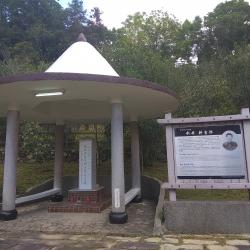Fu'an Temple is located in Shuili Township, Nantou County, behind the Daguan Ice Cream Shop. In addition to the residential house on Mingsheng Road, Fu’an Temple is also a starting point for walking the Shuishalian Historic Trail.
Shuishalian Historic Trail straddles across Puli Township and Shuili Township of Nantou County, with a total length of about 29 km. The trail is also known as the Tudigong Anling Historic Trail. The construction date is unknown but since the Qing period, the Shuishalian Historic Trail was an important route for the Han people to enter the Toushe Basin, Puli Basin, and Sun Moon Lake Shuishe. In the early days of Japanese rule, it was regarded as an important barrier defense line with policing stations.
